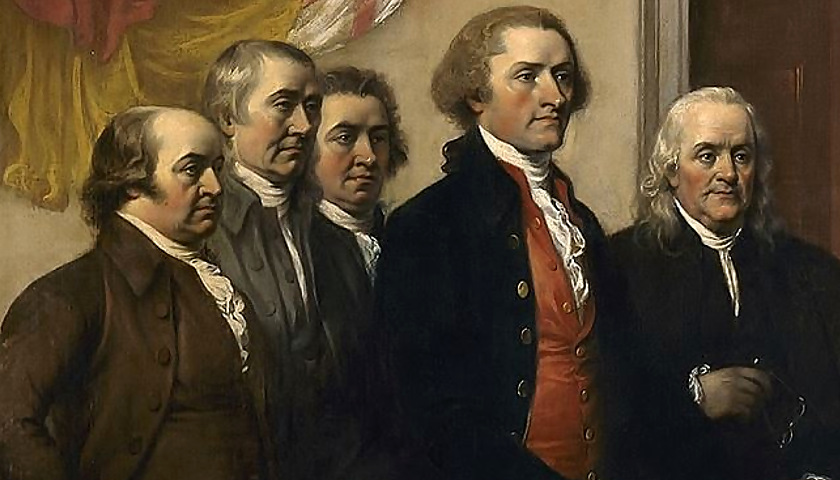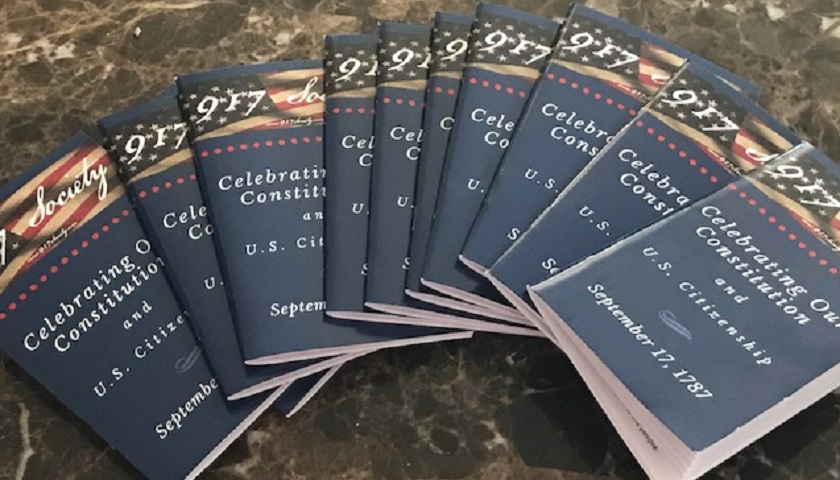It has been said that the oldest word in American politics is “new.” Even the United States Constitution, by far the oldest written constitution in the world, was once new, and had to be defended against charges that it was an unnecessary and unrepublican innovation. The Federalist was keenly aware of the novelty of the Constitution’s enterprise—the attempt to establish “good government from reflection and choice”—but boldly turned it to account.
Read the full storyTag: Federalist Papers
Commentary: 40 Years Of Congress Not Proposing Any Constitutional Amendments Does Not Mean That Changes To The Constitution Are Not Wanted
August 2018 marks the 40th anniversary of the very last time that Congress proposed an amendment to the United States Constitution. It was on August 22, 1978, that the 95th Congress offered to the state legislatures for ratification a constitutional amendment that–had it been ratified by the required number of states within its 7-year deadline on August 22, 1985–would have granted to Washington, D.C. two United States Senators and however many members of the United States House of Representatives the District of Columbia’s population would have warranted. But the lack of action by Congress over the past four decades in proposing constitutional amendments certainly has not meant that there is no desire among Americans to change the federal Constitution. Gaining momentum during that same decade of the 1970s was a movement within the state legislatures to trigger the calling of an “Article V Convention” whereby state lawmakers may largely–but not entirely–bypass a recalcitrant Congress and push for a federal constitutional amendment that, perhaps, Congress might understandably prefer to suppress. In this particular case, that would be an amendment requiring the federal budget to be in balance. Article V of the U.S. Constitution provides in pertinent part: “The Congress…on the application…
Read the full storyConstitution Series: How and Why Thirteen States Ratified the Constitution: 1787 – 1790
This is the fourth of twenty-five weekly articles in The Tennessee Star’s Constitution Series. Students in grades 8 through 12 can sign up here to participate in The Tennessee Star’s Constitution Bee, which will be held on September 23. When Benjamin Franklin emerged from the Constitutional Convention in Philadelphia on September 17, 1787 and told Mrs. Powel the delegates had given Americans “a republic, if you can keep it,” he was anticipating that at least nine of the thirteen states who were joined together under the Articles of Federation would eventually ratify the Constitution. Franklin was right, of course, but it would take three long years before all thirteen states were in the fold of the new republic. The delegates to the Constitutional Convention believed in the concept of the sovereignty of the people, so they made sure that the new republic would not be formally organized until two-thirds of the states–nine out of thirteen–held conventions to ratify the Constitution and their participation in the new republic. Until then, the United States of America, as a country, existed, but under the weak terms of the Articles of Confederation. Once nine states ratified the Constitution, that old form of…
Read the full storyConstitution Series: Federalism
This is the second part of the second of twenty-five weekly articles in The Tennessee Star’s Constitution Series. Students in grades 8 through 12 can sign up here to participate in The Tennessee Star’s Constitution Bee, which will be held on September 23. Federalism is a foundational concept framed in the Constitution of the United States which defines the relationship between the national government and each of the state governments that comprise our republic (thirteen such state governments in 1789, fifty now in 2017). Both entities–the national government and each state government–remain sovereign, while the powers of governance and responsibilities to the citizenry are balanced between the two. Federalism, along with The Separation of Powers within the national government (which we will discuss in tomorrow’s article) are the two foundational concepts of the Constitution that protect the freedoms and liberties guaranteed to individual citizens. “In the compound republic of America, the power surrendered by the people is first divided between two distinct governments, and then the portion allotted to each subdivided among distinct and separate departments,” James Madison, probably, or Alexander Hamilton, possibly, wrote of “the federal system of America” in Federalist Paper #51, one of the famous series of essays…
Read the full story



